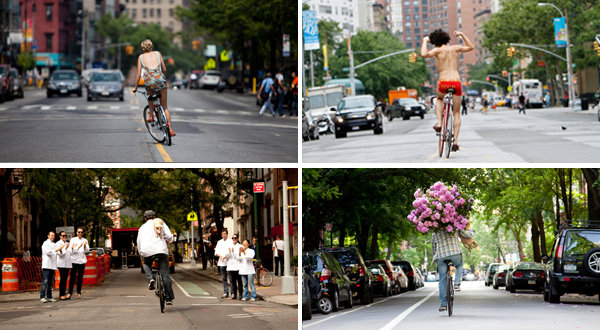Downtown From Behind On Bikes- Aussie Photog Artfully Captures The “Heartbeat of New York City”
(Source: New York Times)
ONE is wearing a couture gown, another just a pair of red underwear. One is lugging a huge bouquet of flowering rhododendrons on his shoulder, another a suckling pig. They are all riding bicycles in the middle of streets downtown, and they are all shown from behind, having passed by, headed toward some unknown destination — a party, a garden, a pig roast.
The photographs are by Bridget Fleming, 30, who moved to the Lower East Side from Australia in 2008. She is halfway through an ambitious project to capture downtown denizens riding on two wheels down each of the approximately 200 streets below 14th Street. She posts some of the photographs on a blog, Downtown From Behind, and hopes the project, which she describes as a glamorous ode to “the heartbeat of New York,” will culminate this spring with a gallery exhibition and Web site.
Click here for more on this story and for the awesome interactive.







 But the program has fallen short of expectations. With less than 10 months until the end of the decade, 24 hydrogen fueling stations are operating in California, most of them near Los Angeles.
But the program has fallen short of expectations. With less than 10 months until the end of the decade, 24 hydrogen fueling stations are operating in California, most of them near Los Angeles.